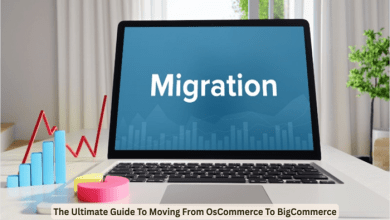
How can businesses choose website visitor identification software that truly aligns with their objectives? Selecting the right tool can significantly influence lead generation and overall marketing effectiveness. Businesses often face difficulties when deciding which software suits their unique requirements.
The wide range of available options makes this decision more complex than it initially appears. This article discusses critical factors that can guide this decision, helping businesses optimize their visitor tracking and conversion strategies. Let’s read in detail about these factors to help you decide on the best visitor identification software for your business goals.
Understand Business Needs and Objectives
Before evaluating options, it is important to clearly identify the goals behind visitor identification. Some businesses prioritize lead qualification, while others focus on improving customer engagement or gathering detailed analytics. Knowing the primary purpose will help narrow down software choices that deliver the most relevant insights. Alignment with overall marketing and sales strategies ensures the selected tool supports measurable outcomes. Defining these needs upfront prevents unnecessary expenses on features that do not add value.
Evaluate Feature Sets and Capabilities
An effective visitor identification solution must offer features that match business demands. Essential functionalities include real-time visitor tracking, detailed company profiles, and customizable reporting. The ability to identify anonymous visitors and link them to potential leads increases the quality of outreach efforts. Additional options, such as integration with CRM systems and automation tools, enhance workflow efficiency. Thoroughly comparing feature sets allows businesses to choose software that supports comprehensive visitor insights.
Assess Integration with Existing Systems
Seamless integration with current marketing and sales platforms is crucial for maximizing software benefits. Compatibility with CRM, email marketing, and analytics tools ensures data flows smoothly between systems. This connectivity enables faster lead nurturing and more accurate campaign tracking. Software that offers flexible APIs or pre-built connectors reduces implementation time and technical challenges. Careful consideration of integration options prevents disruptions and supports a cohesive technology stack.
Consider Ease of Use and Support
The user experience is an important factor that is often overlooked during selection. Software should have an intuitive interface that allows marketing teams to extract insights without extensive training. Accessibility to support resources, including tutorials and customer service, ensures quick resolution of any issues. Choosing a solution with a clear and straightforward dashboard increases adoption rates and overall satisfaction. A strong support system is essential for maintaining operational continuity.
Analyze Scalability and Pricing Models
Businesses must plan for future growth when selecting visitor identification tools. The software should accommodate increasing visitor volumes and additional user accounts without compromising performance. Flexible pricing models that scale with usage help manage costs effectively. Avoiding solutions with rigid plans ensures adaptability as marketing needs change. Evaluating scalability and pricing together supports long-term value and budget management. It is also important to verify any hidden fees or costs related to upgrades and additional features.
Review Data Security and Compliance
Visitor identification software processes sensitive data, making security a top priority. It is important to confirm that the provider follows industry standards for data protection. Features such as encryption, regular audits, and compliance with regulations reduce risks associated with data breaches. Transparent privacy policies and clear user consent mechanisms build trust with website visitors. Choosing a secure platform safeguards business reputation and customer information.
Selecting the best visitor identification software involves balancing functionality, integration, usability, scalability, and security. Careful evaluation based on specific business goals leads to a more effective investment. By prioritizing these aspects, companies can optimize lead generation efforts and enhance customer engagement. Investing time in the selection process ultimately benefits both marketing teams and business outcomes.




